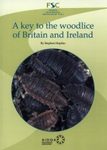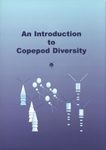![The Natural History of the Crustacea, Volume 5: Life Histories The Natural History of the Crustacea, Volume 5: Life Histories]()
Click to have a closer look
About this book
Contents
Customer reviews
Biography
Related titles
About this book
Crustaceans are increasingly being used as model organisms in all fields of biology, including neurobiology, developmental biology, animal physiology, evolutionary ecology, biogeography, and resource management. Crustaceans have a very wide range of phenotypes and inhabit a diverse array of environments, ranging from the deep sea to high mountain lakes and even deserts. The evolution of their life histories has permitted crustaceans to successfully colonize this variety of habitats. Few other taxa exhibit such a variety of life histories and behavior. A comprehensive overview of their life histories is essential to the understanding of many aspects of their success in marine and terrestrial environments.
The Natural History of the Crustacea, Volume 5: Life Histories provides a general overview of crustacean life histories. Crustaceans have particular life history adaptations that have permitted them to conquer all environments on earth. Crustacean life cycles have evolved to maximize fecundity, growth, and ageing, in a wide range of environmental conditions. Individual contributions contrast benefits and costs of different life histories including sexual versus asexual production, semelparity versus iteroparity, and planktonic larvae versus direct development. Important aspects of particular behaviors are presented (e.g. migrations, defense and territorial behaviors, anti-predator behavior, symbiosis).
Contents
Preface
Chapter 1: Crustacean Life Cycles - Developmental Strategies and Environmental Adaptions
Chapter 2: Body Size, Maturation Size, and Growth Rate of Crustaceans
Chapter 3: Clutch Mass, Offspring Mass, and Clutch Size: Body-mass Scaling and Taxonomic and Environmental Variation
Chapter 4. Semelparity and Iteroparity
Chapter 5. Life History Perspectives on Voltinism
Chapter 6. Larvae and Direct Development
Chapter 7. Growing Old: Aging in Crustacea
Chapter 8. Life-cycle and Seasonal Migrations
Chapter 9. Diel Vertical Migration of Aquatic Crustaceans - Adaptive Role, Underlying Mechanisms and Ecosystem Consequences
Chapter 10. Uncharted Territories: Defense of Space in Crustacea
Chapter 11. Evolutionary Ecology of Burrow Construction and Social Life
Chapter 12. Predator-induced Defenses in Crustacea
Chapter 13. Life History Adaptation in Prey
Chapter 14. Cannibalism in Crustaceans
Chapter 15. The Life Cycle of Symbiotic Crustaceans: A Primer
Chapter 16. Daphnia as a Model for Eco-evolutionary Dynamics
Index
Customer Reviews
Biography
Gary A. Wellborn is Professor of Biology and Director of The University of Oklahoma Biological Station. Martin Thiel is a Professor of Marine Biology at Universidad Catolica del Norte (UCN) in Coquimbo, Chile.
By: Gary Wellborn(Editor), Martin Thiel(Editor)
454 pages, 16 plates with colour photos and colour illustrations; 144 b/w photos and b/w illustrations
"A series of this high quality gives specialists a place to focus and nonspecialists a good place to get trenchant summaries that are not available elsewhere."
– Jeffrey Levinton, Ecology & Evolution, Stony Brook University, The Quarterly Review of Biology






















![The Encyclopedia of the Swedish Flora and Fauna, Kräftdjur: Krill – Tiofotade Kräftdjur [Swedish]](http://mediacdn.nhbs.com/jackets/jackets_resizer_medium/26/268174.jpg?height=150&width=118)



![Les Crustacés Décapodes des Petites Antilles: Avec de Nouvelles Observations pour Saint-Martin, la Guadeloupe et la Martinique [The Crustacean Decapods of the Lesser Antilles: With New Observations for Saint-Martin, Guadeloupe and Martinique]](http://mediacdn.nhbs.com/jackets/jackets_resizer_medium/24/245203.jpg?height=150&width=106)














